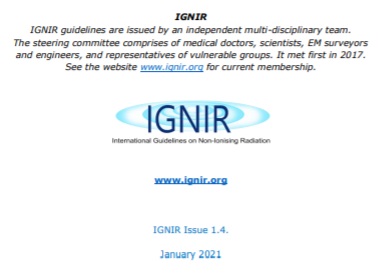

IGNIR offers science-based advice and guidance on the health and environmental effects of man-made non-ionising radiation. Its aim is to protect people and the environment from detrimental exposure to man-made EMF pollution, and comprises three functions:
To provide advice about appropriate safety levels for man-made electromagnetic exposure
To assess published guidelines on man-made electromagnetic exposure and make its own recommendations as to which are appropriate
Provide practical and reliable assessment guidelines for surveyors and building biologists.
IGNIR has developed a set of Guidelines for electromagnetic exposure based on the peer-reviewed EUROPAEM EMF Guidelines 2016.
https://www.degruyter.com/document/doi/10.1515/reveh-2016-0011/html
It has three guideline groupings:
Day (D)
Night (N)
Sensitive (S)
It covers three frequency ranges:
Extremely Low Frequency
(ELF)Very Low Frequency
(VLF)Radiofrequency (RF)
Electromagnetic (EM) hygiene and safety involves minimising exposure levels that can be toxic to the environment and human health. The guidelines set forth by EUROPAEM (European Academy on Environmental Medicine) were published under open access by the international journal Reviews on Environmental Health. Although at present there are no assured safe levels of man-made EM exposure, and studies continue to show harm to living systems at very small exposure values, IGNIR’s guidance aims to help achieve substantial reduction in EM exposure.
IGNIR’s Guidelines are aimed to also help protect sensitive groups such as children, the elderly, fetuses, pregnant women, those with co-morbidity, body metal work and people with Electromagnetic Hypersensitivity (EHS).
IGNIR’s latest independent guidelines on EMF exposure are available now to download and use.
https://www.emfsa.co.za/wp-content/uploads/2021/03/IGNIR-Guidelines-2021.pdf
Source: https://ignir.org/
Added note by EMFSA:
See our February 2021 newsletter under the heading “Millimeter Waves Will Not Penetrate The Skin” https://mailchi.mp/emfsa/news
